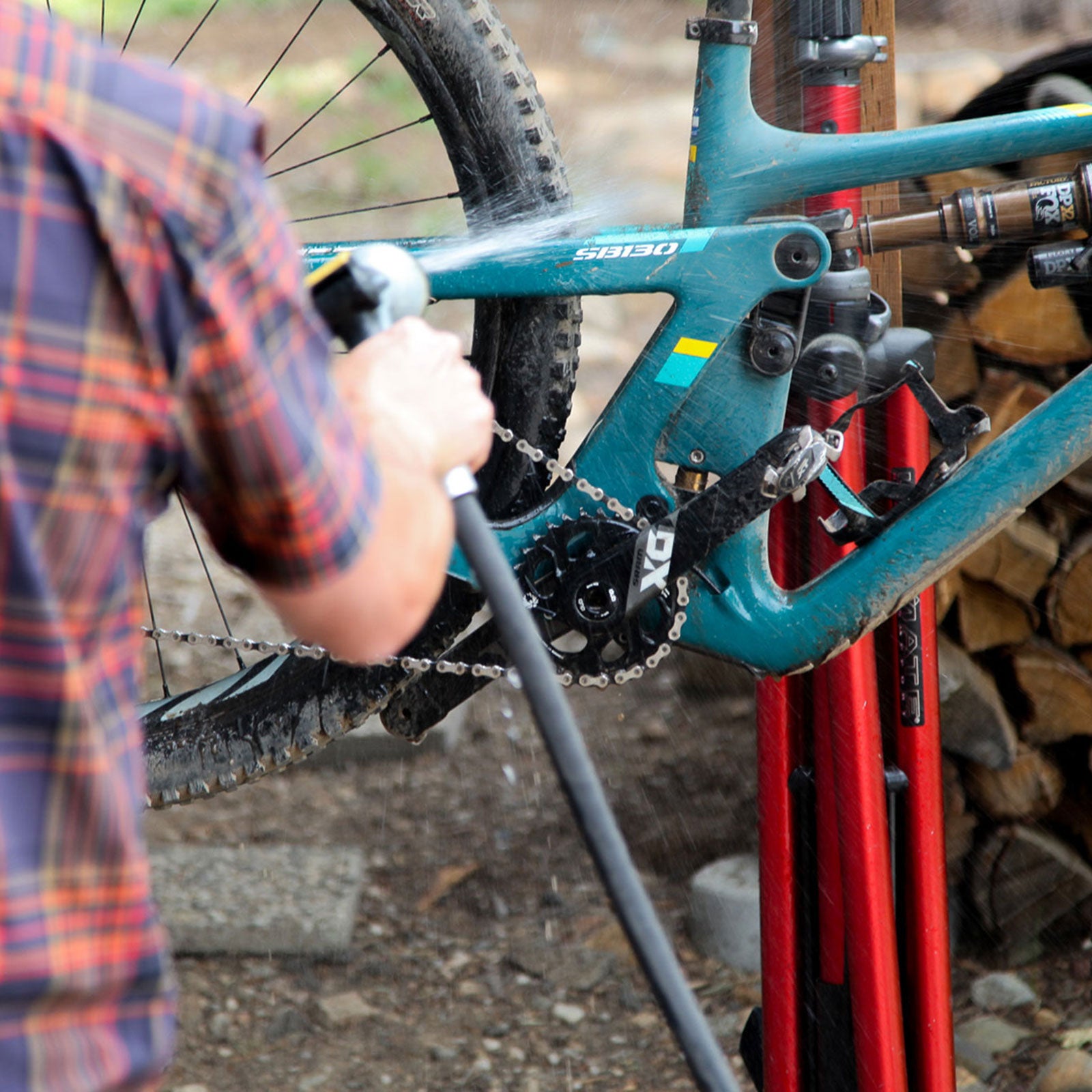You’ve invested in a nice bike, and sure, you take it into the shop for regular repairs and maintenance. But are you properly cleaning it after each use to help keep it running smoothly? A swipe of a towel or the spritz of a hose is a decent start, but that’s not all you should do at home to keep the dirt, grime, and rust away. I asked Wayne Smith, a mechanic at Olympic Bike Shop, near my home in Tahoe City, California, for some tips. “My rule of thumb: a clean bike is a happy bike,” he says.
When to Wash Your Bike
If you go for a ride and your bike managed to stay somewhat clean, you don’t need to do a full washing afterward. “At the very least, you always want to give the chain a wipe down, put some new lube on it, and wipe it off,” Smith says.
If your bike looks visibly dirty—say it’s coated with mud—then you ideally want to clean it before putting it away. “Grit gets into places where it’s not intended to, like your bearings or your rear shock, and that can affect performance,” Smith says. “Cleaning it will extend the life of your bike.”
When you’re traveling and don’t have access to a hose, use a bucket of clean water. Or visit a bike shop in the area and see if it has a bike-cleaning station you can use (many do). Some bike-friendly hotels also offer bike-cleaning spots.
The Tools You’ll Need
A proper bike stand—like ($290)—isn’t necessary, but it’s nice to have. “You’ll need somewhere to lean or stand your bike,” Smith says. “If it’s on the ground, you’ll do a lot of flipping your bike over. If you don’t have a stand, you can hang it in a tree or on a piece of wood off the side of your house.” Grab a bucket of clean water (cold is fine), a standard garden hose, and a couple of rags you don’t mind getting muddy or greasy.
You’ll also need brushes, and Smith likes using three different styles. The first is a soft-bristled brush to use strictly on your frame—like ($12)—but a paintbrush will work, too. The second is a more aggressive, designated dirty brush for cleaning extrafilthy zones, like your tires or cranks, à la ($6) or a fresh toilet-bowl-cleaning brush. Finally, a stiff-bristled chain and gear brush, like ($13), is handy when scrubbing your drivetrain. You can also just grab a preloaded kit, like ($22) or Pedro’s Pro Brush Kit ($24). For soap, you can turn to specific bike-cleaning ones, like ($15), but Smith swears by ($14), which cuts through the muck and is environmentally friendly. You’ll also want a degreaser, like ($17) or ($10).
The Process
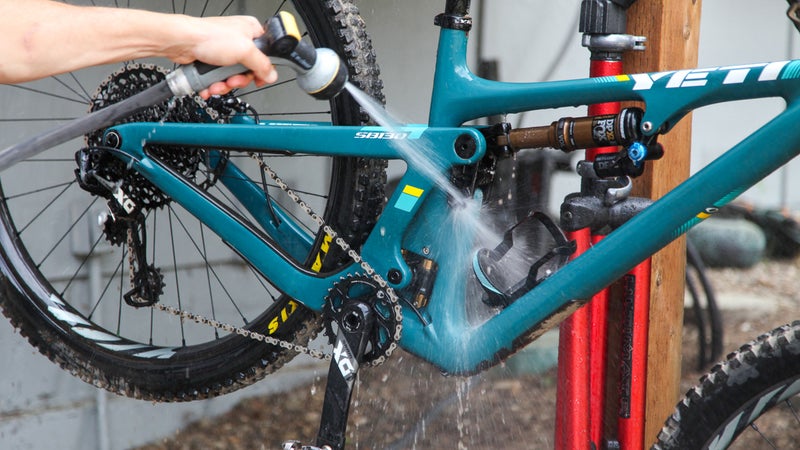
Step 1: Spray your bike down with a hose.
Never use a pressure washer or the ultra-intense spray on your hose. “You don’t need a powerful stream of water. You want the same force of stream that you’d use for watering plants,” Smith says. “Use a pressure washer and you could pack water into the bearings and cause them to rust.”
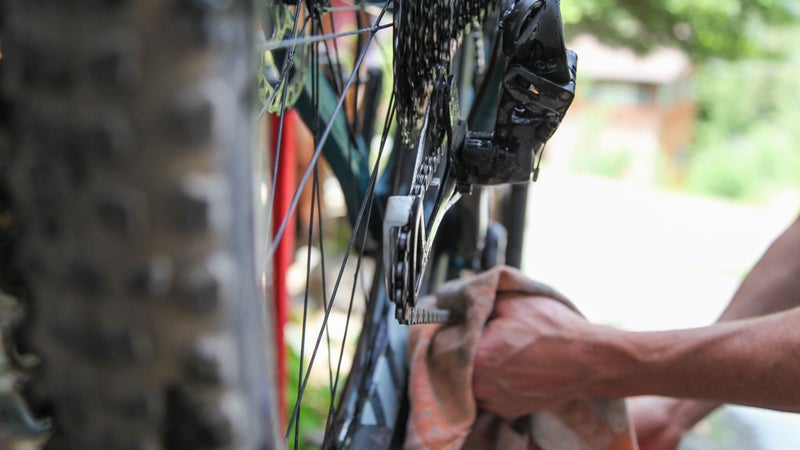
Step 2: Scrub the drivetrain.
Smith sprays and soaks the area with a degreaser. Then he takes his drivetrain brush and scrubs the chain, chainrings, cassette, and derailleur vigorously. He dumps the brush in the bucket of water to rinse and repeats as necessary, maybe three or four times. “When it’s clean, it’ll shine like silver jewelry,” he says.
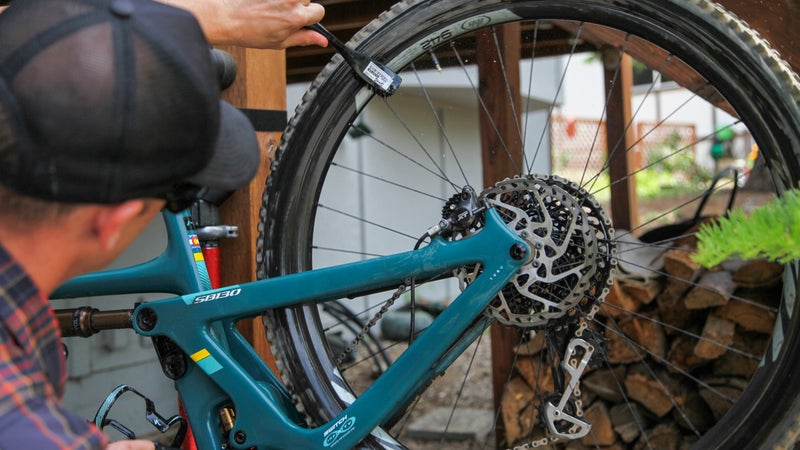
Step 3: Clean the wheels and tires.
Plunge your designated dirty brush into the bucket of water with a few squeezes of soap, then polish the tires clean. “That soapy water will bubble and foam up if there’s a hole in the tire,” Smith says. “You’ll notice issues on your bike a lot easier if it’s clean. I’ll wait till I’m done cleaning, then patch or repair whatever holes I need to.”
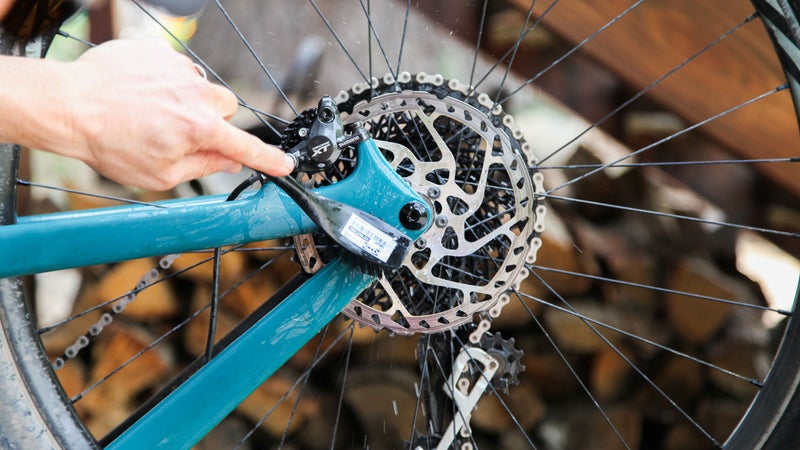
Step 4: Give the frame a bath.
Use that same bucket of soapy water and the soft brush you reserved to clean any crud off the frame. “If you have pesky pieces of grit and grime, the trick isn’t more water pressure. It’s using your scrub brush to get into the nooks and crannies,” Smith says. “Treat it like you would your car.” Rinse the suds with the hose. Now that it’s clean, you’ll notice any dings or scuffs that happened to the frame during your ride. For extra credit, put a dab of rubbing alcohol on a rag to remove any shoe scuffs from the frame.
Once It’s Clean
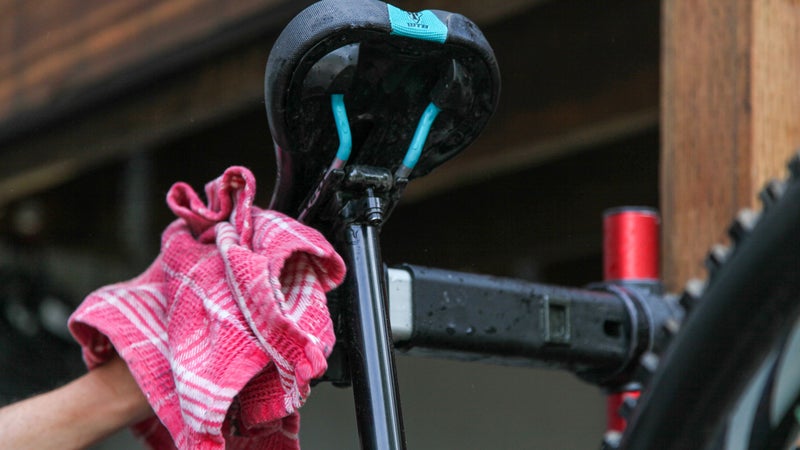
To dry the bike, let it sit out in the sun. If you’re in a rush, use a clean towel or rag to pat it dry. Once the chain has air-dried, grab your favorite chain lube—Smith recommends ($16). Get one revolution of a steady stream of lube on the chain (or you can lube the individual chain links), then let it soak in for a minute before wiping it down. “The most important thing is to wipe off the grease,” Smith says.
Things to Note
It doesn’t matter what kind of bike you have—road, mountain, cruiser, or electric—they all get washed in the same general manner. There are a couple of things to remember, though. If you have any leather parts on your bike (maybe the saddle, grips, or a water-bottle holder), do your best to not get those parts wet. You can wrap them up with a rag or just avoid spraying that area with the hose. But if your bike comes with any electronic parts—like an electric battery, for example—those are typically built to get wet.


